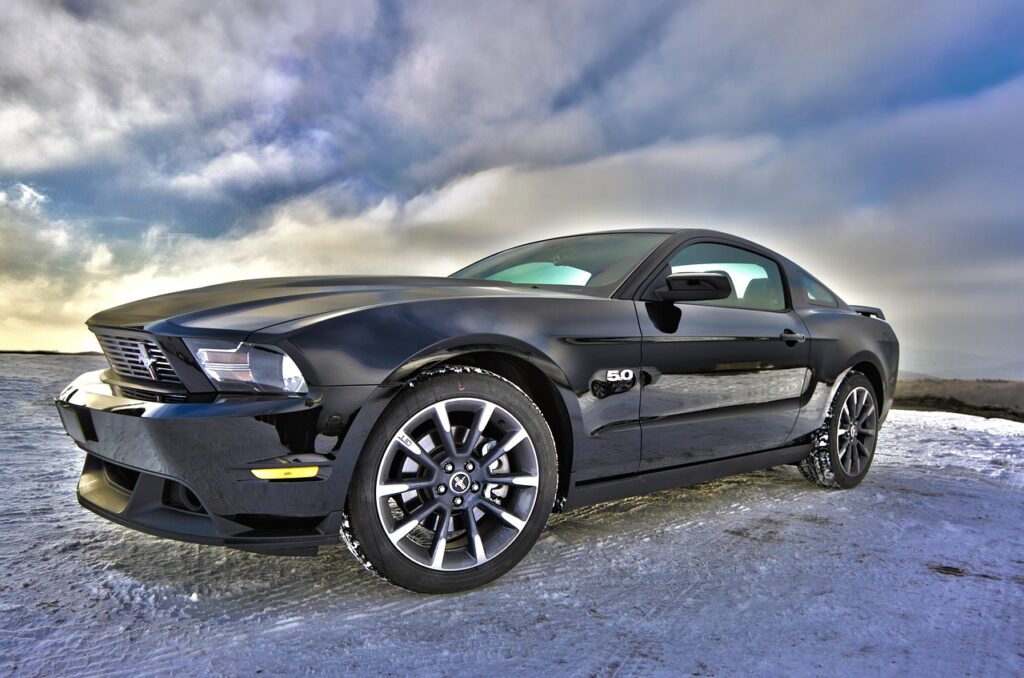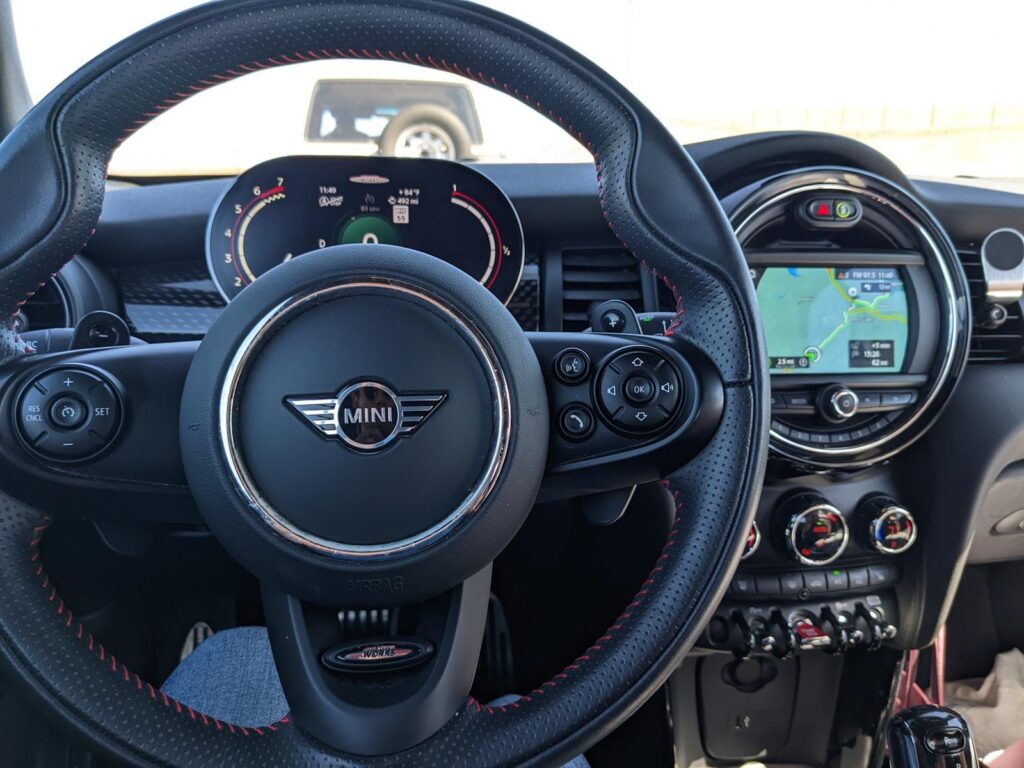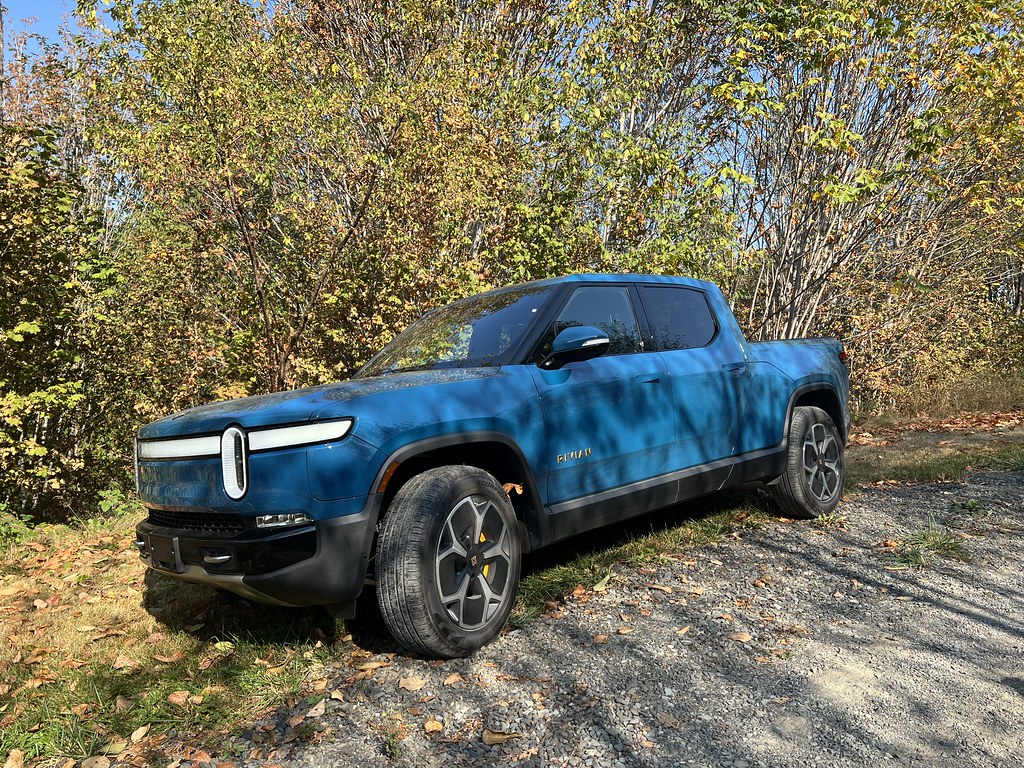
Alright, car lovers and future car owners, let’s get real for a sec. We’ve all been there, right? That moment when you’ve just dropped a significant chunk of change—or signed on the dotted line for a multi-year loan—on what you *thought* was your dream ride, only for a cold wave of dread to wash over you. That sinking feeling in your stomach? That, my friends, is the notorious buyer’s remorse, and when it comes to cars, it can hit like a freight train.
It’s a tale as old as time, or at least as old as the automobile: manufacturers roll out these shiny, promising machines, but sometimes, the reality just doesn’t live up to the glossy ads. You pay too much to choose too poorly, and suddenly, that exhilarating new car smell is replaced by the pungent aroma of regret. Considering how wild new and used car prices have gotten these days, making a buying decision based solely on aesthetics and specs can absolutely land you in a world of trouble.
But here’s the good news (sort of!): you’re not alone! Buyer’s remorse, in some form or another, is basically inevitable for many of us. The best way to dodge that bullet? Learning from the hard-won (and sometimes hilarious, if you’re not the one experiencing it) mistakes of others. So, buckle up, because we’re about to take a deep dive into 15 vehicles that owners wish they had never, ever purchased. Let their confessions be your cautionary tale as we explore the rides that just didn’t make the cut!
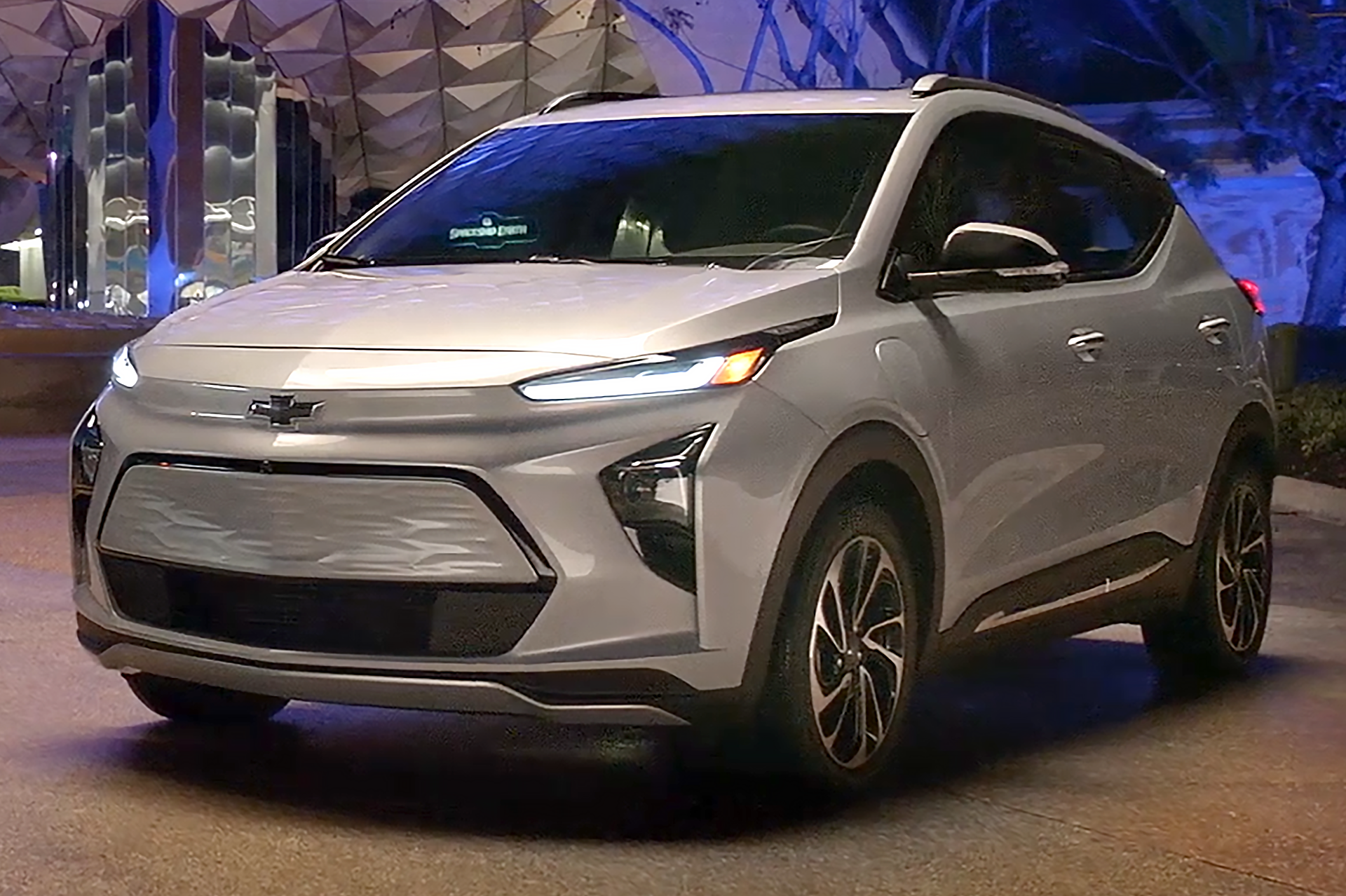
1. **Chevrolet Bolt**Ah, the Chevy Bolt. On paper, it sounds pretty sweet, doesn’t it? General Motors’ electric marvel often gets a nod for being affordable and boasting a respectable range. But, as many owners can attest, this EV has been plagued with problems that turned potential joyrides into genuine headaches. The most infamous issue? Battery-related fires, which spiraled into massive recalls in both 2020 and 2021. Talk about a fiery personality nobody asked for!
The core of the problem lay with the lithium-ion batteries, manufactured by LG. These power packs had a nasty habit of short-circuiting, overheating, and then, you guessed it, igniting into flames. Imagine that anxiety every time you charge your car! It’s not exactly the ‘peace of mind’ experience you’re hoping for when you go electric.
Beyond the headline-grabbing battery issues, owners also reported a few other less-than-stellar qualities. The ride quality was often described as merely “so-so,” and let’s not even get started on the space for rear passengers, which also failed to impress. And the handling? You guessed it – “so-so” again. When you’re spending your hard-earned cash, “so-so” doesn’t quite cut it, especially when coupled with major safety concerns.
Car Model Information: 2019 Chevrolet Bolt EV LT
Name: Chevrolet Bolt EV
Caption: 2022 Chevrolet Bolt EV
Manufacturer: General Motors
Production: unbulleted list
ModelYears: unbulleted list
Class: Subcompact car
BodyStyle: hatchback
Layout: Front-engine, front-wheel-drive layout
Predecessor: Chevrolet Spark EV
Categories: 2020s cars, All Wikipedia articles in need of updating, All articles containing potentially dated statements, All articles with unsourced statements, Articles containing potentially dated statements from February 2018
Summary: The Chevrolet Bolt EV (marketed in Europe as Opel Ampera-e) is a battery electric subcompact hatchback manufactured and marketed by General Motors under its Chevrolet brand from late 2016 until late 2023, with a brief hiatus between mid-2021 and early 2022.
The first-generation Bolt was developed and manufactured with LG Corporation. Sales of the 2017 Bolt began in California in December 2016; it was released nationwide and international markets release in 2017. A rebadged European variant was marketed as the Opel Ampera-e in mainland Europe. In 2017, the Bolt was the second-best-selling plug-in car in the United States. It was named the 2017 Motor Trend Car of the Year, the 2017 North American Car of the Year, an Automobile magazine 2017 All Star, and was listed in Time magazine’s Best 25 Inventions of 2016. The Ampera-e was discontinued after 2018. By the end of 2020, GM had sold 112,000 Bolt and Ampera-e cars worldwide. The first-generation Bolt had been subject to at least three recalls due to battery fire risks.
In mid-2023, GM officials said they would discontinue the Bolt; after outcry, they announced plans for a next-generation model, which is expected to be revealed in 2025 for model year 2026.
Get more information about: Chevrolet Bolt
Buying a high-performing used car >>>
Brand: Chevrolet Model: Bolt
Price: $12,999 Mileage: 64,980 mi.
Read more about: From Humble Beginnings to Electric Dreams: A Deep Dive into Elon Musk’s Electrifying and Eclectic Garage
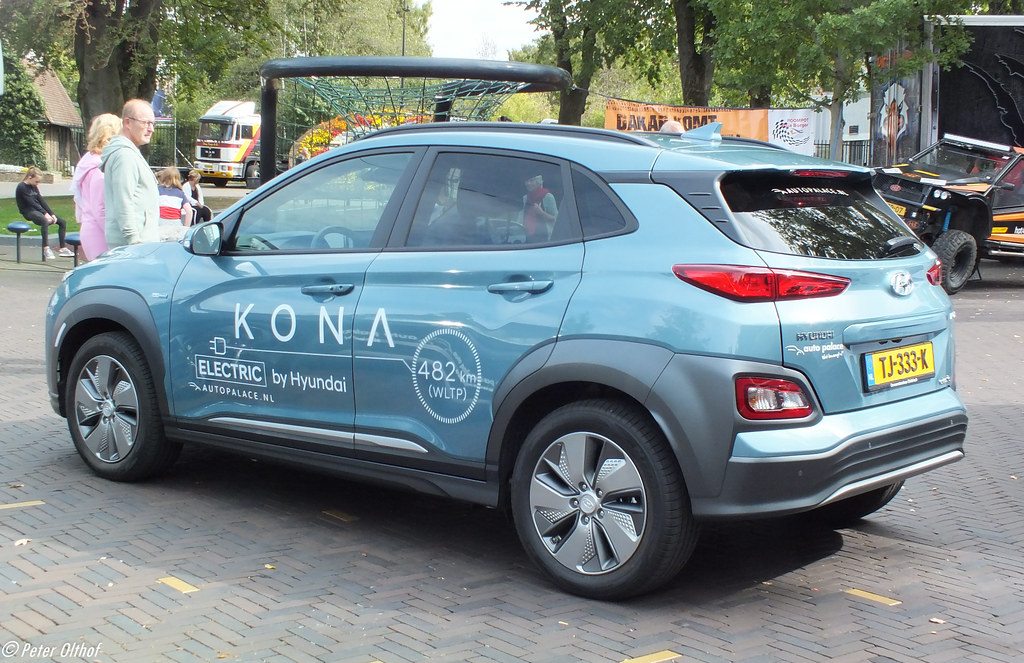
2. **Hyundai Kona Electric**Hydundai has genuinely been on a roll, rolling out some really interesting and well-received electric vehicles that have captured the public’s imagination. But, every now and then, even the best carmakers have a miss, and for Hyundai in the EV space, the Kona Electric is Exhibit A. Much like its Bolt counterpart, the Kona Electric unfortunately carries a history stained with battery fires and subsequent recalls.
Car-buyers beware, indeed! Hyundai had to issue worldwide recalls in 2020 and 2021, all in a bid to “nip the fire risks in the bud” by replacing the problematic battery packs in affected EVs. It’s a huge undertaking and a clear indicator of just how serious these issues were, forcing a major intervention to ensure driver safety.
However, the battery problems, as one might grimly discover, were often just the tip of the iceberg for many Kona Electric owners. While the text doesn’t explicitly detail *other* major issues for the Kona, the phrase “Buyer beware!” and “the battery issues are just the tip of the iceberg” strongly implies that ownership was far from smooth sailing beyond the battery drama. It seems some electric dreams can quickly turn into electric nightmares.
Car Model Information: 2022 Kia Sorento S
Name: Hyundai Kona
Caption: Hyundai Kona N Line (SX2)
Manufacturer: Hyundai Motor Company
Aka: Hyundai Kauai (Portugal)
Production: 2017–present
ModelYears: 2018–present
Class: Subcompact crossover SUV
BodyStyle: SUV
Layout: ubl
Categories: 2020s cars, All-wheel-drive vehicles, All Wikipedia articles in need of updating, Articles containing Chinese-language text, Articles containing Korean-language text
Summary: The Hyundai Kona (Korean: 현대 코나) is a subcompact crossover SUV produced by the South Korean manufacturer Hyundai. The first-generation Kona debuted in June 2017 and the production version was revealed later that year. It is positioned between the Venue or Bayon and the Tucson in Hyundai crossover SUV line-up. The battery electric version called the Kona Electric (or Kona EV) was first launched in South Korea during the first half of 2018 and rolled out gradually worldwide afterwards.
Get more information about: Hyundai Kona
Buying a high-performing used car >>>
Brand: Hyundai Model: Kona Electric
Price: $24,997 Mileage: 58,177 mi.
Read more about: Buyer’s Remorse on Wheels: 9 Vehicles Owners Wish They Never Drove Off the Lot
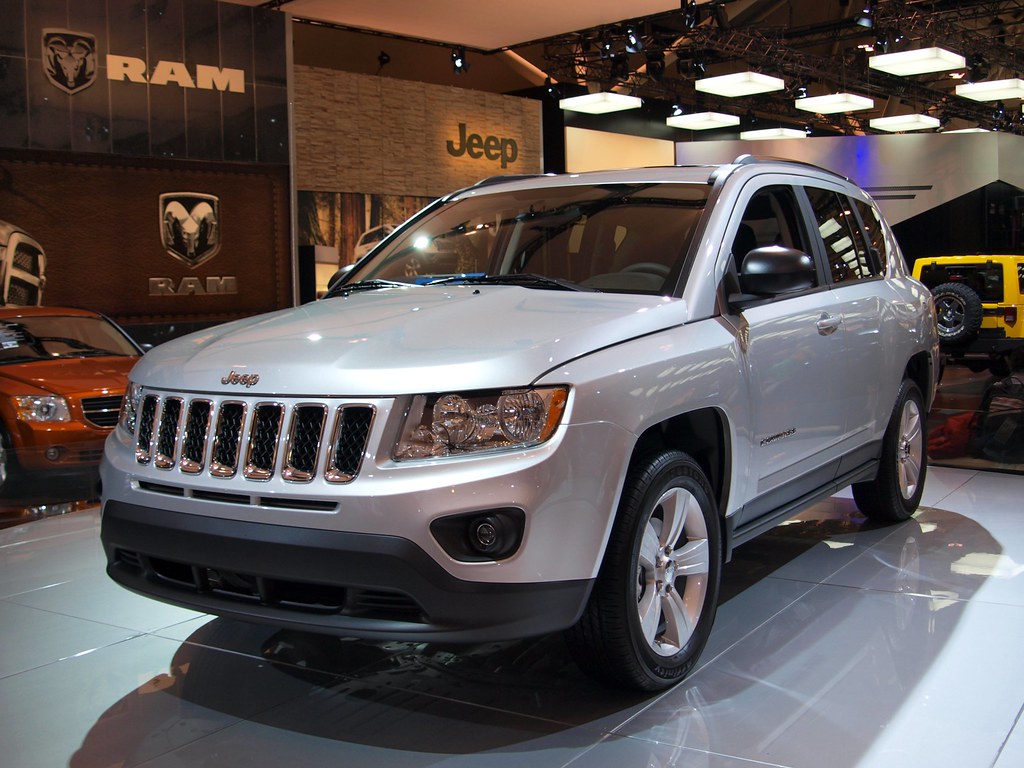
3. **Jeep Compass**If you’re in the market for a compact SUV, the Jeep Compass might catch your eye with its rugged branding, but a closer look at owner experiences suggests you might want to… well, steer clear. This vehicle has been a source of “serious issues over various model years,” according to complaints, and many owners have found it to be less of a reliable companion and more of a “migraine headache on wheels.”
One of the biggest pain points that consistently pops up in owner feedback revolves around the transmission. Specifically, both the continuously variable transmission (CVT) and the 9-speed automatic transmissions have been cited for experiencing “herky-jerky shifting” – a driving experience no one enjoys. Even worse, there are reports of these transmissions suffering “catastrophic failure,” leaving drivers stranded and with hefty repair bills.
But wait, there’s more! The Compass’s problems aren’t just limited to its gearbox. Owners also frequently complain about “poor engine performance,” which can make daily driving a chore, and “excessive oil consumption,” signaling deeper engine issues. Add “electrical system issues” to that list, and you’ve got a recipe for a truly frustrating ownership experience that certainly doesn’t inspire confidence on or off the beaten path.
Car Model Information: 2017 Jeep Wrangler Unlimited Sport
Name: Jeep Compass
Caption: 2019 Jeep Compass
Manufacturer: Jeep
Production: 2006–present
ModelYears: 2007–present
Class: Compact crossover SUV
BodyStyle: SUV
Layout: Front-engine, front-wheel-drive layout
Chassis: Unibody
Categories: 2010s cars, 2020s cars, All-wheel-drive vehicles, All Wikipedia articles written in American English, Articles with short description
Summary: The Jeep Compass is a compact crossover SUV, introduced in 2006 for the 2007 model year. The first generation Compass and Patriot, its rebadged variant, were among Jeep’s first crossover SUVs. The second-generation Compass debuted in September 2016 in Brazil and at the Los Angeles International Auto Show in November 2016, sharing a modified platform with the Renegade. It is positioned between the smaller Renegade and the larger Cherokee globally or the Commander in South America. The third-generation Compass debuted in May 2025, built on the STLA Medium by Stellantis, shared with other PSA Groupe vehicles.
Get more information about: Jeep Compass
Buying a high-performing used car >>>
Brand: Jeep Model: Compass
Price: $20,725 Mileage: 111,103 mi.
Read more about: Buyer’s Remorse on Wheels: 9 Vehicles Owners Wish They Never Drove Off the Lot
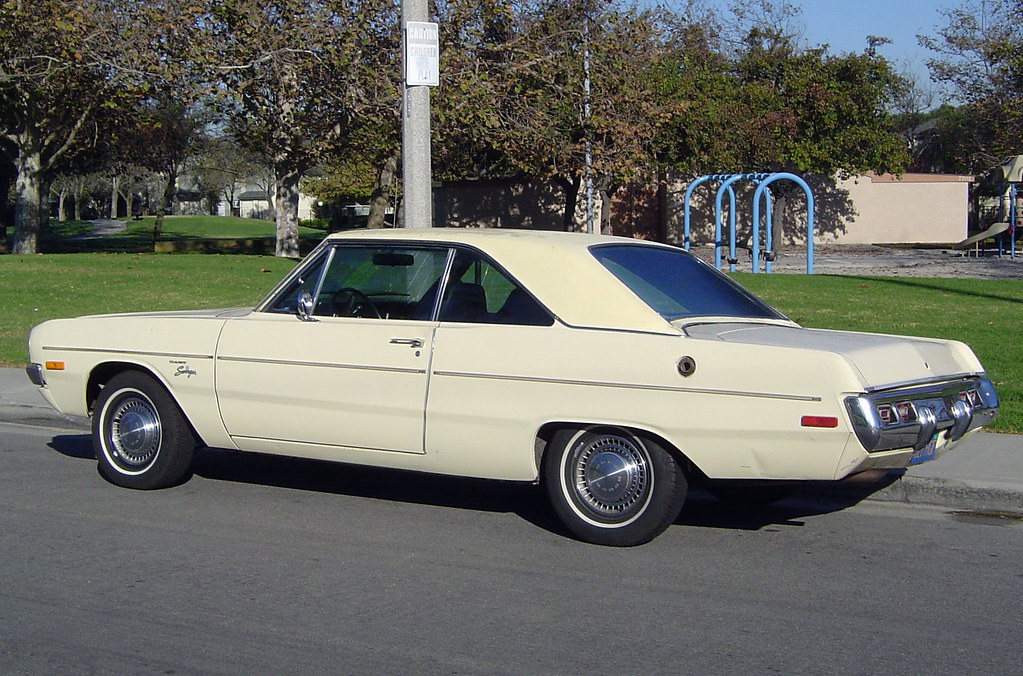
4. **Dodge Dart**The Dodge Dart, a compact sedan, certainly aimed to offer a stylish, affordable option in its segment. However, for many who took the plunge, it quickly became apparent that this compact car came with “full-size car problems.” It’s one of those vehicles where owners, looking back, might scratch their heads and wonder, “Where do we even begin with the issues?”
The list of complaints about the Dart seems to stretch from bumper to bumper. From persistent transmission troubles that make driving unpredictable to engine woes that sap power and reliability, and from suspension issues that lead to uncomfortable rides to brake problems that raise safety concerns, the Dart appears to be a veritable grab bag of automotive grievances. It’s a testament to the fact that sometimes, a sleek exterior hides a multitude of mechanical sins.
Perhaps the most damning evidence against the Dart comes from Consumer Reports, a trusted voice in product evaluation. They noted that a staggering “around six in 10 buyers say they are not satisfied with the vehicle.” That’s a significant majority of owners who, given the chance, would likely “unpick” their purchase in a heartbeat, making the Dart a prime example of buyer’s remorse on four wheels.
Car Model Information: 1972 Dodge Dart Swinger
Name: Dodge Dart
Caption: 1966 Dodge Dart GT 2-door hardtop
Manufacturer: Dodge
Production: 1959–1976 (US market)
ModelYears: 1960–1976 (US market)
Class: Full-size
Layout: FR layout
Predecessor: Dodge Coronet#Fourth generation (1957–1959)
Related: Plymouth Valiant,Chrysler Valiant,Dodge Phoenix
Successor: Dodge Aspen,Dodge Diplomat,Talbot Tagora
Categories: 1970s cars, All articles with unsourced statements, Articles with short description, Articles with unsourced statements from December 2023, Articles with unsourced statements from May 2025
Summary: The Dodge Dart is a line of passenger cars produced by Dodge from the 1959 to 1976 model years in North America, with production extended to later years in various other markets.
The production Dodge Dart was introduced as a lower-priced full-size model in 1960 and 1961, but became a mid-size car for one model year for 1962, and was then reduced to a compact for two generations, from 1963 to 1976.
Chrysler had first used ‘Dart’ name plates on two Italian styled show cars, in 1956 and 1957, before it became a Dodge model name. The Dart nameplate was resurrected for a Fiat-derived compact car that was introduced in 2012.
Get more information about: Dodge Dart
Buying a high-performing used car >>>
Brand: Dodge Model: Dart
Price: $18,250 Mileage: 40,424 mi.
Read more about: 14 Classic Rides That Boomers Loved But Millennials and Gen Z Just Can’t Stand: Unpacking Why These Iconic Cars Fail to Appeal Now
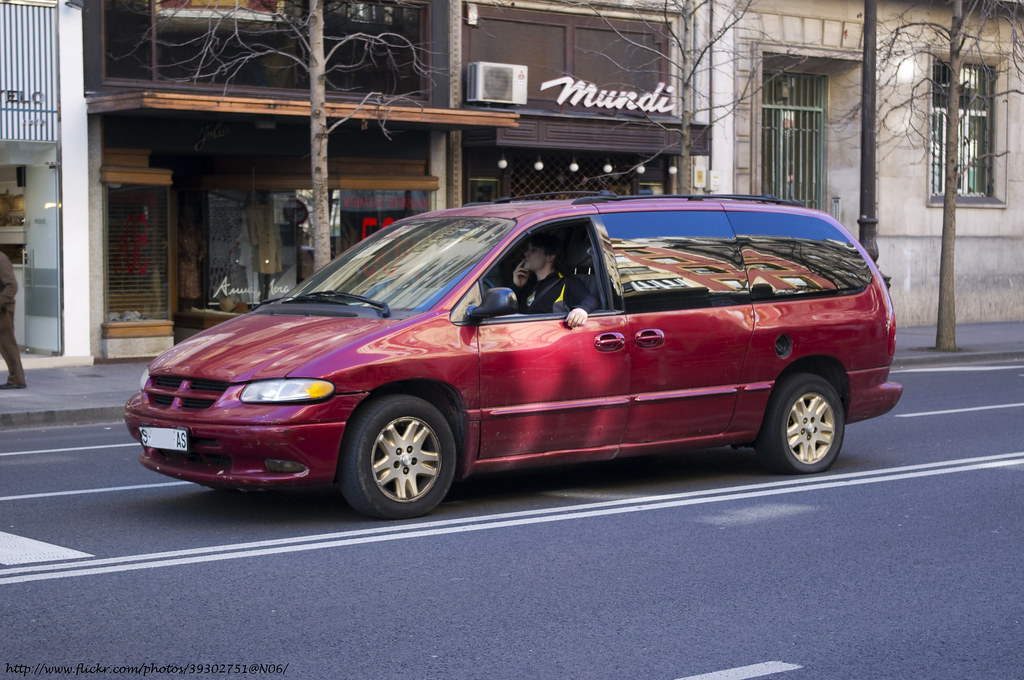
5. **Dodge Grand Caravan**For many families, the Dodge Grand Caravan has been a fixture, creating countless memories on road trips and daily commutes. These memories, however, are often a mixed bag—some fond, yes, but many tinged with frustration. While this minivan might have served its purpose as a family, pet, and ‘thing’ hauler, a common thread among owners suggests that these vehicles were “anything but smooth driving.”
The primary culprit for owner dissatisfaction, and a recurring nightmare for many, is “transmission failure.” It’s incredibly difficult to rely on a family vehicle when its most crucial component is known to give up the ghost without much warning. Even before the transmissions go completely kaput, owners frequently report issues like “delayed gear engagement,” “rough shifting,” and “slipping,” turning every drive into a nervous game of ‘will it or won’t it?’
As if transmission issues weren’t enough to induce buyer’s remorse, many Grand Caravan owners also grappled with “electrical system problems,” leading to unpredictable glitches and malfunctions. On top of that, “heavy oil consumption” added another layer of maintenance hassle and expense. It’s no wonder that if these owners “could rewind time and have a do-over, they would gladly choose something else” for their family hauling needs.
Car Model Information: 2022 Kia Sorento S
Caption: 2011 Dodge Grand Caravan Mainstreet
Name: Dodge Grand Caravan
Manufacturer: Chrysler Corporation,Daimler AG,Chrysler LLC,Chrysler Group LLC,FCA US LLC
Class: Minivan
Layout: FF layout,F4 layout
Production: November 2, 1983 –August 21, 2020
ModelYears: 1984–2020
Related: Plymouth Voyager,Chrysler Town & Country (minivan),Dodge Mini Ram,Chrysler Voyager,Volkswagen Routan
Assembly: Windsor, Ontario,Fenton, Missouri,Fenton, Missouri,Fuzhou
Successor: Dodge Journey,Chrysler Voyager
Categories: All-wheel-drive vehicles, All articles with unsourced statements, Articles with short description, Articles with unsourced statements from December 2017, Articles with unsourced statements from May 2009
Summary: The Dodge Caravan is a series of minivans manufactured by Chrysler from the 1984 through 2020 model years. The Dodge version of the Chrysler minivans, was marketed as both a passenger van and a cargo van (the only version of the model line offered in the latter configuration). For 1987, the model line was joined by the long-wheelbase Dodge Grand Caravan. Produced in five generations across 36 model years, the Dodge Caravan is the second longest-lived Dodge nameplate (exceeded only by the Dodge Charger). Initially marketed as the Dodge counterpart of the Plymouth Voyager, the Caravan was later slotted between the Voyager and the Chrysler Town & Country. Following the demise of Plymouth, the model line became the lowest-price Chrysler minivan, ultimately slotted below the Chrysler Pacifica.
Sold primarily in the United States and Canada, the Dodge Caravan was also marketed in Europe and other international markets under the Chrysler brand (as the Chrysler Voyager or Chrysler Caravan). From 2008 onward, Dodge marketed the model line only as the Grand Caravan; Ram Trucks sold a cargo-only version of the model line as the Ram C/V Tradesman. The model line was also rebranded as the Volkswagen Routan from 2009 through 2014.
After the 2020 model year, the Dodge Grand Caravan was discontinued, ending production on August 21, 2020. For 2021 production, the Grand Caravan nameplate was moved to Chrysler, which used it for a Canadian-market version of the Chrysler Pacifica (in the United States, the exact vehicle was marketed as the Chrysler Voyager).
For its entire production run, the Dodge Caravan/Grand Caravan was manufactured by Chrysler Canada (now Stellantis Canada) at its Windsor Assembly facility (Windsor, Ontario). From 1987 until 2007, the model line was also manufactured by Chrysler at its Saint Louis Assembly facility (Fenton, Missouri). Since their introduction in late 1983, over 14.6 million Chrysler minivans have been sold worldwide (including export versions and versions sold through rebranding).
Get more information about: Dodge Caravan
Buying a high-performing used car >>>
Brand: Dodge Model: Grand Caravan
Price: $24,997 Mileage: 58,177 mi.
Read more about: Buyer’s Remorse on Wheels: 9 Vehicles Owners Wish They Never Drove Off the Lot

6. **Nissan Sentra**The Nissan Sentra has been a popular compact car for decades, and like many long-standing models, there are certainly some good model years out there. However, it’s crucial to know which ones to absolutely avoid if you want to dodge a bullet train of regret. The context explicitly warns against the Sentra models “made from 2013 to 2019,” labeling them as “horrific” by owner standards.
The villain in this particular Nissan narrative is often the infamous continuously variable transmission (CVT). This transmission type has been a persistent “thorn in the side of many Sentra owners,” leading to a litany of complaints. Drivers reported “CVT problems includ[ing] overheating, jerky acceleration, and shuddering,” making for an unpleasant and unreliable driving experience that is anything but smooth.
Beyond the CVT woes, the laundry list of issues for these Sentra model years also included “engine stalling,” which is a serious safety concern and a major frustration. And to add insult to injury, there have been “many recalls related to the vehicle’s airbags, seatbelts, brakes, and more.” When your car is consistently making headlines for major component failures and recalls, it’s a pretty clear sign that buyer’s remorse is a well-earned sentiment.
Car Model Information: 2018 Nissan Sentra SV
Name: Nissan Sentra
Caption: 2021 Nissan Sentra SR (B18; Canada)
Manufacturer: Nissan
Aka: Nissan Sunny
Production: 1982–present
Class: Subcompact car
Predecessor: Nissan Sunny#B310
Categories: 1990s cars, 2000s cars, 2010s cars, 2020s cars, All Wikipedia articles written in American English
Summary: The Nissan Sentra is a series of automobiles manufactured by the Japanese automaker Nissan since 1982. Since 1999, the Sentra has been categorized as a compact car, while previously it occupied the subcompact class. Until 2006, Sentra was a rebadged export version of the Japanese Nissan Sunny, but since the 2013 model year, Sentra is a rebadged export version of the Sylphy. The Sentra nameplate is not used in Japan. Many other countries in Latin America sell their versions of the Sunny as the Sentra. In Mexico, the first three generations of the Sentra were known as the Nissan Tsuru (Japanese for crane), and the B13 model was sold under that name until 2017, alongside the updated models badged as Sentra.
In North America, the Sentra currently serves as Nissan’s compact car, despite being rated as a mid-size car by the EPA due to its interior volume since the 2007 model year. While previous Sentras were subcompacts, the Sentra has grown over the years, with the Nissan Versa having replaced the Sentra in the entry-level area.
The Sentra name was created for Nissan by Ira Bachrach of NameLab, and Bachrach describes the origin as “Nissan wanted consumers to understand that it was quite safe even though it was small. The word Sentra sounds like central as well as sentry, which evokes images of safety.”
Get more information about: Nissan Sentra
Buying a high-performing used car >>>
Brand: Nissan Model: Sentra
Price: $9,987 Mileage: 73,999 mi.
Read more about: Buyer’s Remorse on Wheels: 9 Vehicles Owners Wish They Never Drove Off the Lot
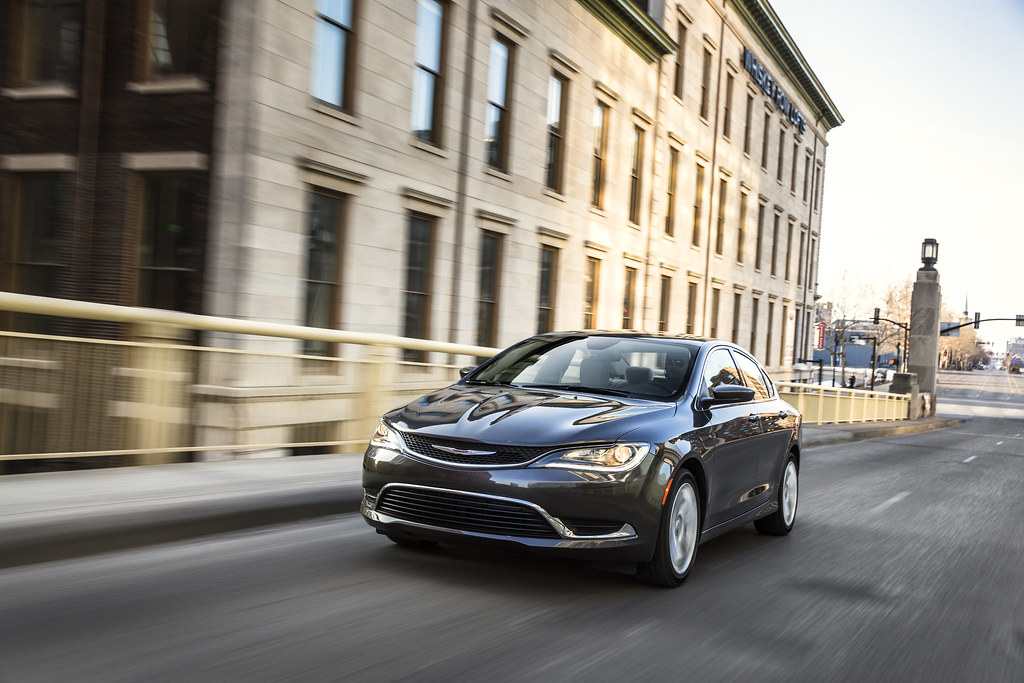
7. **Chrysler 200**The Chrysler 200, manufactured between 2011 and 2017, was positioned as a stylish mid-size sedan, but unfortunately, it racked up a reputation for having a multitude of “reliability issues.” For anyone who bought one of these, particularly those who invested in the later model years, the experience was often far from ideal, leading to significant regret.
Owners of the 2015, 2016, and 2017 models specifically found the 9-speed automatic transmission to be “especially problematic.” This was hardly a minor inconvenience; in many cases, transmission failure became “a thing,” turning a major component into a ticking time bomb. Starting with transmission issues is never a good sign for long-term ownership satisfaction.
And sadly, the transmission wasn’t the only area where the Chrysler 200 faltered. The vehicle also “suffers from engine performance problems,” further diminishing the driving experience and potentially leading to costly repairs. When a car has both transmission and engine issues, it’s a double whammy that can quickly transform a new purchase into a source of constant stress and financial drain, solidifying that deep feeling of buyer’s remorse.
Car Model Information: 2015 Chrysler 200 S
Name: Chrysler 200
Manufacturer: Chrysler
Production: 2010–2016
ModelYears: 2011–2017
Assembly: Sterling Heights, Michigan
Class: Mid-size car
Sp: us
Predecessor: Chrysler Sebring
Categories: 2010s cars, All articles with dead external links, All articles with unsourced statements, Articles with dead external links from July 2020, Articles with permanently dead external links
Summary: The Chrysler 200 is a mid-size sedan that was manufactured and marketed by Chrysler from model years 2011 to 2017 across two generations in four-door sedan and two-door convertible (first generation only) body styles.
The 200 nameplate debuted on the 200C, a prototype hybrid vehicle shown at the 2009 North American International Auto Show in Detroit and based on the Chrysler 300. The 200C concept was engineered to accept either traditional gasoline, hybrid or full-electric powertrains.
Get more information about: Chrysler 200
Buying a high-performing used car >>>
Brand: Chrysler Model: 200
Price: $7,200 Mileage: 122,275 mi.
Read more about: 14 Classic Rides That Boomers Loved But Millennials and Gen Z Just Can’t Stand: Unpacking Why These Iconic Cars Fail to Appeal Now
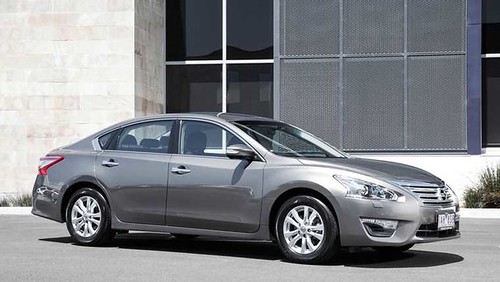
8. **Nissan Altima**Here we go again with another Nissan model that has left a trail of regret in its wake: the Nissan Altima. It’s yet another car that owners have openly wished they had never purchased, and a familiar culprit emerges as the primary source of their automotive anguish. If you’ve been following along, you can probably guess what it is. That’s right, the problematic continuously variable transmission (CVT).
The CVT in the Nissan Altima exhibited its “worst issues raising their ugly heads in the 2013 to 2019 model years,” making those specific iterations a high-risk gamble for buyers. Owners described everything from erratic behavior to outright failure, turning a smooth ride into a jarring, unpredictable experience. When the core function of your car, the transmission, is unreliable, it’s a huge blow to confidence and satisfaction.
But the Altima’s troubles didn’t stop at the transmission. Owners also reported significant issues with “the steering,” which can compromise both safety and driving pleasure. Furthermore, “excessive oil consumption and oil leaks” added another layer of mechanical frustration and ongoing maintenance concerns. These combined problems paint a picture of a car that, despite its initial appeal, frequently failed to deliver on its promise of reliable transportation, cementing its place on the ‘unpick’ list.”
Alright, if your stomach isn’t already doing somersaults from the first batch of car-owner confessions, buckle up, because we’re not done yet! We’re continuing our deep dive into the rides that have left drivers everywhere shaking their heads, wondering what on earth they were thinking. From here, we’ll uncover a few more infamous models that fell short of expectations, before we get to the real juicy stuff: why this buyer’s remorse thing happens, how to squash it when it does, and most importantly, how to dodge it altogether in your next car-buying adventure.
Car Model Information: 2015 Nissan Altima 2.5 S
Name: Nissan Altima
Caption: 2024 Nissan Altima SR (L34; US)
Manufacturer: Nissan
Aka: Nissan Bluebird
Production: 1992–present
Class: Compact car
Predecessor: Nissan Bluebird,Nissan Stanza
ModelYears: 1993–present
Categories: 2000s cars, 2010s cars, 2020s cars, All-wheel-drive vehicles, All Wikipedia articles written in American English
Summary: The Nissan Altima is a mid-size car manufactured by Nissan since 1992. It is a continuation of the Nissan Bluebird line, which began in 1955.
The Altima has historically been larger, more powerful, and more luxurious than the Nissan Sentra but less so than the Nissan Maxima. The first through fourth-generation cars were manufactured exclusively in the United States and officially sold in North and South America, along with the Middle East and Australia. For other markets, Nissan sold a related mid-size sedan called the Nissan Teana which was between the Altima and Maxima in terms of size. In 2013, the Teana became a rebadged version of the fifth-generation Altima.
The name “Altima” was originally applied to a top trim line of the Nissan Leopard for the Japanese market in 1986, and then to the Nissan Laurel Altima mid-size car sold in Central America and the Caribbean before 1992. In 1992, Nissan discontinued the Stanza which was a Nissan Bluebird clone, replacing it with the US-built Altima, while remaining a compact car. The first Altima was produced in June 1992, as a 1993 model. All Altima models for the North American market were built in Smyrna, Tennessee, until June 2004, when Nissan’s Canton, Mississippi plant also began producing the model to meet high demand.
Get more information about: Nissan Altima
Buying a high-performing used car >>>
Brand: Nissan Model: Altima
Price: $8,235 Mileage: 117,517 mi.
Read more about: Buyer’s Remorse on Wheels: 9 Vehicles Owners Wish They Never Drove Off the Lot
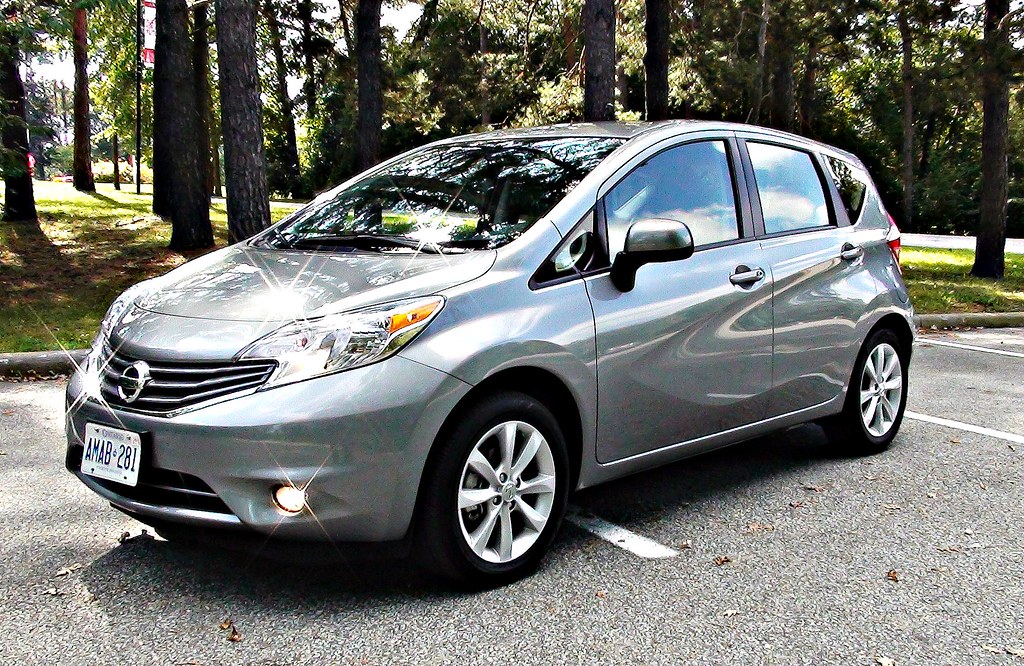
9. **Nissan Versa Note**Looking for a super-cheap small hatchback? The Nissan Versa Note might have caught your eye with its wallet-friendly price tag. But here’s the kicker: that low price often mirrors the quality you’re actually getting. Many owners found out the hard way that sometimes, getting a ‘deal’ means signing up for a whole lot of headaches down the road. It turns out that when something seems too good to be true, it often is.
The biggest villain in the Versa Note saga, according to frustrated owners, was none other than the continuously variable transmission (CVT). Yes, that pesky transmission type that has plagued so many other Nissan models makes another appearance here. Drivers complained endlessly about its less-than-stellar performance, turning what should have been a smooth, economical ride into a constant source of annoyance and regret.
And as if the transmission woes weren’t enough, let’s talk about power – or the distinct lack thereof. The 1.6-liter 4-cylinder engine under the hood of the Versa Note was frequently described as having “anemic acceleration.” Imagine trying to merge onto a highway or get up to speed with traffic, only to feel like you’re stuck in slow motion. It’s not exactly the thrilling driving experience anyone hopes for, even in an affordable hatchback.
Car Model Information: 2022 Kia Sorento S
Categories: All set index articles, Articles with short description, CS1 Mexican Spanish-language sources (es-mx), CS1 Portuguese-language sources (pt), CS1 Spanish-language sources (es)
Summary: Nissan Versa is an automobile nameplate used by the Japanese manufacturer Nissan in the Americas for the following models:
According to a Nissan press release in 2008, “versa” is short for “versatile space” meant to imply the spaciousness of the interior and configurable cargo arrangements. The Versa is one of the few remaining subcompact cars left on sale in the North American market, with most automakers dropping small cars from their lineups to focus on crossovers and SUVs.
Get more information about: Nissan Versa
Buying a high-performing used car >>>
Brand: Nissan Model: Versa Note
Price: $24,997 Mileage: 58,177 mi.
Read more about: Beyond the Screen: Uncovering the Fates of the Most Iconic TV and Movie Cars Ever
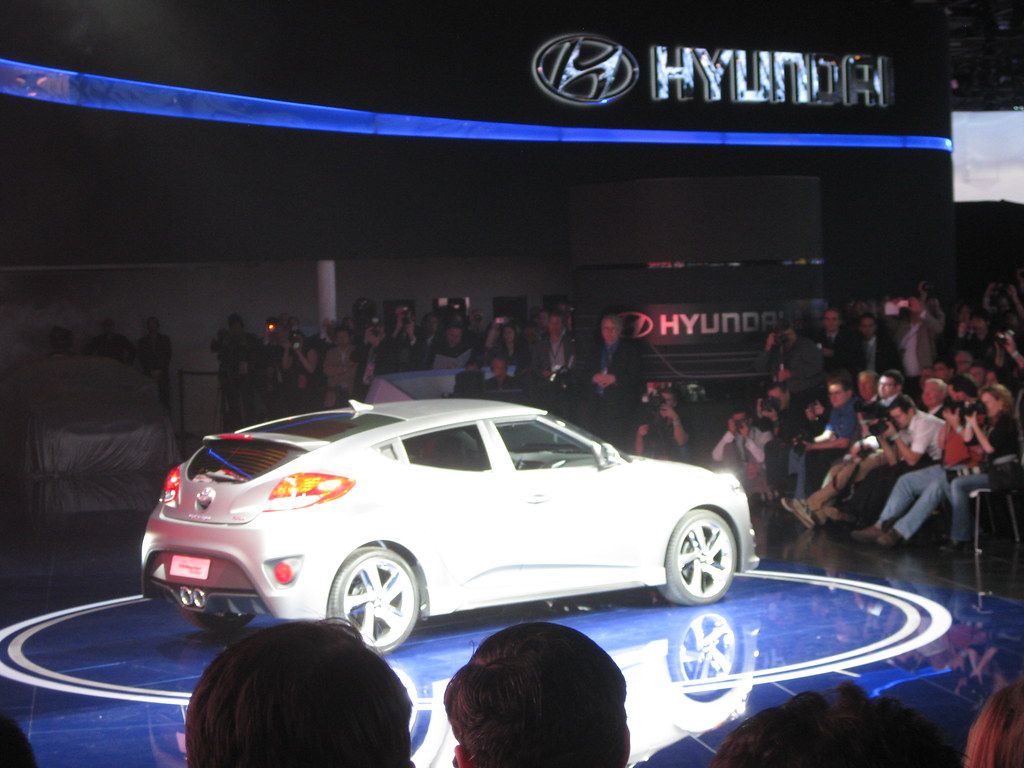
10. **Hyundai Veloster**Now, the Hyundai Veloster. You’ve got to admit, this car has a certain charm. With its cool, distinctive styling, unique three-door setup, and often praised responsive handling, it definitely stands out from the crowd. It looks like a car designed to put a smile on your face and bring a bit of flair to your daily commute. But here’s the thing about cool looks: they can sometimes hide a multitude of sins.
Unfortunately, for many Veloster owners, the problems proved to be genuinely “hard to ignore.” Imagine falling for that sleek exterior only to find that beneath the surface lurked some serious mechanical gremlins. The biggest heartbreaker for some was the engine, with reports of “engine issues [that] can lead to catastrophic failure.” Talk about a sudden and dramatic end to your cool ride dreams!
But the Veloster’s woes didn’t stop at the engine. Its dual-clutch transmission also had a knack for causing grief, exhibiting issues like “delayed acceleration, slipping, and jerky shifts.” And if that wasn’t enough to induce a full-blown case of buyer’s remorse, owners also frequently grappled with “suspension and steering problems.” It seems that sometimes, even the coolest-looking cars can turn into the biggest headaches.
Car Model Information: 2012 Hyundai Veloster Base
Name: Hyundai Veloster
Manufacturer: Hyundai Motor Company
Production: 2011–2022
Class: Sport compact car
Layout: Front-engine, front-wheel-drive layout
BodyStyle: hatchback
Predecessor: Hyundai Tiburon
ModelYears: 2012–2022
Assembly: Ulsan
Categories: All Wikipedia articles in need of updating, All articles with unsourced statements, Articles containing Korean-language text, Articles with short description, Articles with unsourced statements from May 2018
Summary: The Hyundai Veloster (Korean: 현대 벨로스터, romanized: Hyeondae Belloseuteo) is a compact car first produced in 2011 by Hyundai, with sales beginning in South Korea on March 10, 2011, and in Canada and the United States since the fall of 2011. In South Korea, it was marketed under Hyundai’s ‘Premium Youth Lab’. It was unveiled on January 10, 2011, at the Detroit Auto Show, and fills the void left when Hyundai discontinued the Hyundai Tiburon after the 2008 model year.
The car differs from most other hatchbacks with its asymmetrical door configuration, featuring one large door on the driver side and two smaller doors on the passenger side. This configuration is more common on commercial vehicles and minivans.
Get more information about: Hyundai Veloster
Buying a high-performing used car >>>
Brand: Hyundai Model: Veloster
Price: $7,950 Mileage: 83,462 mi.
Read more about: Is Your Ride a Ticking Time Bomb? 14 Popular Cars That Can Seriously Let You Down After 100K Miles

11. **Kia Rio**Oh, the Kia Rio. It’s often celebrated for its affordability and impressive fuel efficiency, making it a popular choice for budget-conscious drivers. But here’s the twist: a significant number of Kia Rio owners have also ended up with their fair share of buyer’s remorse. It seems that while it might save you some cash at the dealership and the pump, it could cost you peace of mind down the line.
The main culprit for owner dissatisfaction with the Rio often boils down to “engine issues.” These aren’t just minor hiccups; we’re talking about frustrating problems like “rough idling and misfires,” which usually point to deeper troubles with components such as spark plugs or ignition coils. Nobody wants their car to sound like it’s struggling just to stay on, or worse, misfiring on a regular basis.
Beyond the mechanical headaches, many Rio owners also found themselves complaining about the vehicle’s interior. Specifically, “cheap interior quality and comfort issues” frequently came up in feedback. It’s a bummer when your daily driver doesn’t offer a comfortable or premium feel, making every commute a little less enjoyable. When you combine affordability with these kinds of frustrations, it’s easy to see why regret can set in.
Car Model Information: 2023 Kia Rio S
Name: Kia Rio
Caption: Fourth generation Kia Rio
Manufacturer: Kia
Aka: Kia Pride (2005–2017),Kia K2 (China; 2011–2020)
Production: November 1999 – December 2023
ModelYears: 2001–2023 (North America)
BodyStyle: hatchback
Class: Subcompact car
Layout: Front-engine, front-wheel-drive layout
Predecessor: Kia Pride,Kia Avella
Successor: Kia K3 (BL7)
Categories: 2000s cars, 2010s cars, Articles containing Korean-language text, Articles with short description, CS1 Croatian-language sources (hr)
Summary: The Kia Rio (Korean: 기아 리오) is a subcompact car manufactured by Kia from 1999 to 2023. Body styles have included a three and five-door hatchback and four-door sedan, equipped with inline-four gasoline and diesel engines, and front-wheel drive.
The Rio replaced the first generation Pride—a rebadged version of the Ford Festiva—and the Avella, a subcompact sold as a Ford in some markets. A second generation was introduced in 2005 in Europe and in 2006 in North America, sharing its platform with the Hyundai Accent, a subcompact manufactured by its sister Hyundai Motor Company in South Korea.
In August 2023, the K3 was introduced as its successor in several markets such as Mexico and the GCC countries.
Get more information about: Kia Rio
Buying a high-performing used car >>>
Brand: Kia Model: Rio
Price: $17,218 Mileage: 22,509 mi.
Read more about: From Humble Beginnings to Electric Dreams: A Deep Dive into Elon Musk’s Electrifying and Eclectic Garage
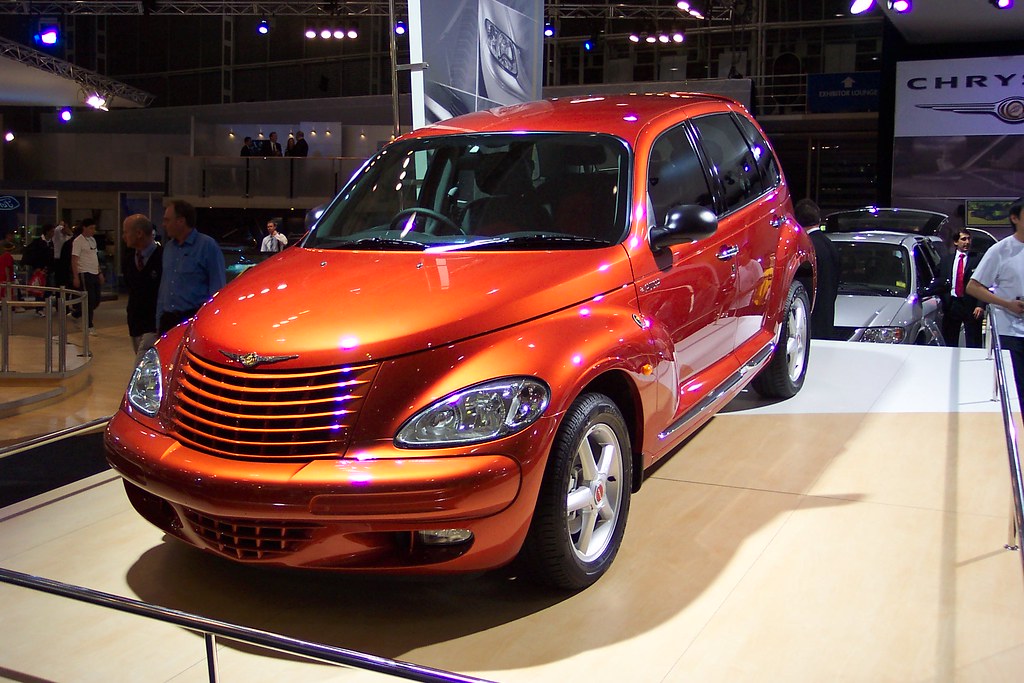
12. **Chrysler PT Cruiser**Now, let’s talk about a car that definitely sparks strong opinions: the Chrysler PT Cruiser. Its retro style is truly a ‘love it or hate it’ kind of thing – or, perhaps, a ‘love to hate it’ situation for some. You see them on the road and they definitely stand out, but for many owners, the unique looks were the *least* of their problems. It turns out, this compact car had a lot more going on beneath its distinctive exterior.
The PT Cruiser, according to a litany of owner complaints, suffered from “engine issues galore.” We’re talking about a laundry list that includes everything from unexpected stalling, rough idling, and overheating, to the dreaded head gasket failure. These aren’t just minor annoyances; these are serious mechanical faults that can quickly drain your wallet and leave you stranded.
And the bad news doesn’t stop there. Beyond the engine woes, the PT Cruiser also developed a reputation for “transmission and electrical problems, among other things.” When a car throws multiple major system failures your way, it’s not just an inconvenience—it’s a full-blown automotive crisis. It’s no wonder that these pervasive issues left countless owners deeply regretting their buying decision, wishing they could hit the rewind button.
Car Model Information: 2021 Volkswagen Atlas 2.0T SE
Name: Chrysler PT Cruiser
Manufacturer: Chrysler
ModelCode: PT,PG
Production: 2000–2010
ModelYears: 2001–2010
Assembly: Toluca, Mexico State
Designer: Bryan Nesbitt
Class: Compact car
BodyStyle: convertible
Platform: Chrysler PT platform
Related: Dodge SRT4,Dodge Neon
Predecessor: Dodge Neon
Successor: Lancia Delta#Third generation
Layout: Front-engine, front-wheel-drive layout
Engine: ubl
Transmission: Ultradrive#40TE
Wheelbase: 103 in
Abbr: on
Length: 168.8 in
Width: 67.1 in
Height: 63 in
Weight: 3123 lb
Categories: 2010s cars, All articles with unsourced statements, Articles with short description, Articles with unsourced statements from March 2018, Cars discontinued in 2010
Summary: The Chrysler PT Cruiser is a compact car that was built by the American company Chrysler from 2001 until 2010. Introduced as a five-door hatchback wagon, a two-door convertible variant was also made from 2005 until 2008.
Originally planned as a Plymouth model, the PT Cruiser was ultimately marketed as a Chrysler when Plymouth was discontinued. Intended to invoke 1930s aesthetics, the exterior of the PT Cruiser was designed by Bryan Nesbitt. The model received an intermediate facelift for the 2006 model year. Interior packaging was noted for its high roof, high h-point seating, and flexible cargo and passenger configurations enabled by a multi-level rear cargo shelf and rear seats a user could fold, tumble, or remove.
The PT Cruiser was produced in Mexico and Austria at the Toluca Car Assembly and Eurostar Automobilwerk factories respectively. By the end of production in July 2010, worldwide production had reached 1.35 million.
In its nameplate, PT stands for “Personal Transport” or “Personal Transportation”. PT was the PT Cruiser’s product code for the Mexican-made units.
Get more information about: Chrysler PT Cruiser
Buying a high-performing used car >>>
Brand: Chrysler Model: PT Cruiser
Price: $25,919 Mileage: 49,076 mi.
Read more about: 14 Classic Rides That Boomers Loved But Millennials and Gen Z Just Can’t Stand: Unpacking Why These Iconic Cars Fail to Appeal Now
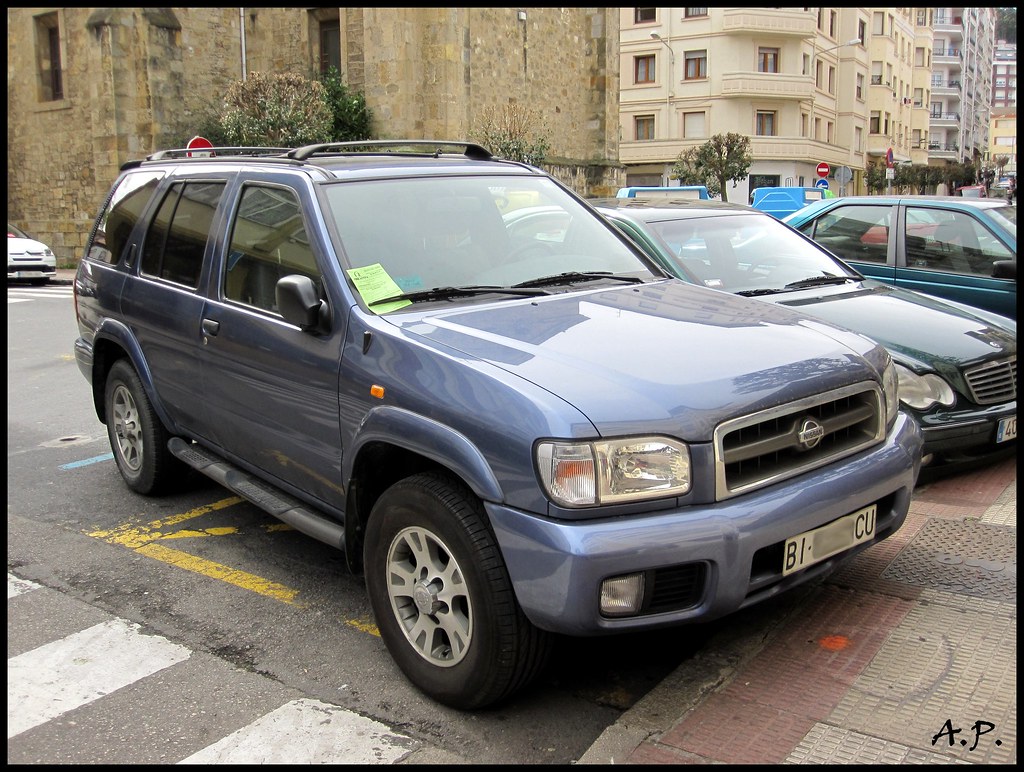
13. **Nissan Pathfinder**The Nissan Pathfinder is a popular SUV, often seen as a reliable choice for families and adventurers alike. But hold on a second! Despite its popularity, this vehicle has a notorious track record for problems that leave owners absolutely reeling with regret. It seems that even well-loved models can have some serious skeletons in their closets, leading to that familiar sinking feeling after the purchase.
Guess what’s back, back again? That’s right, the continuously variable transmission (CVT)! For many Pathfinder owners, this transmission has been a constant source of frustration. Drivers have reported everything from “rough shifting, shuddering, and even overheating.” Imagine being on a road trip, and your SUV suddenly decides to have a mechanical temper tantrum. It’s definitely not the kind of adventure you signed up for.
To make matters worse, some unlucky Nissan Pathfinder owners found themselves facing the grim reality of needing to “replace the transmission” entirely. That’s a major, wallet-busting repair that can instantly turn a promising purchase into a financial nightmare. And if that wasn’t enough, “engine issues and fuel system problems” also contributed to the overall owner dissatisfaction, truly making the Pathfinder a path of regret for many.
Car Model Information: 2023 Nissan Pathfinder SL
Name: Nissan Pathfinder
Caption: 2022 Nissan Pathfinder Platinum 4WD (R53, US)
Manufacturer: Nissan
Production: 1985–present
ModelYears: unbulleted list
Layout: unbulleted list
Class: unbulleted list
Chassis: unbulleted list
Predecessor: unbulleted list
Successor: unbulleted list
Categories: 1990s cars, 2000s cars, 2010s cars, 2020s cars, All-wheel-drive vehicles
Summary: The Nissan Pathfinder is a range of sport utility vehicles manufactured by Nissan since 1985. Until the third-generation model, the Pathfinder is based on Nissan’s compact pickup truck platform which it shares with the Navara/Frontier.
The Pathfinder was marketed as the Nissan Terrano (Japanese: 日産・テラノ, Hepburn: Nissan Terano) outside North America. Beginning in 2004, the vehicles were marketed globally as the Pathfinder.
In 2012, the R52 series Pathfinder was released as a three-row crossover SUV based on the unibody Nissan D platform, moving away from the body-on-frame chassis format. The role of a mid-size body-on-frame SUV in Nissan’s global lineup was passed to the Terra/X-Terra, which was released in 2018 and based on the D23 series Navara.
Get more information about: Nissan Pathfinder
Buying a high-performing used car >>>
Brand: Nissan Model: Pathfinder
Price: $33,900 Mileage: 18,055 mi.
Read more about: 11 SUVs That Promise Adventure But Deliver Owners Immediate Regret
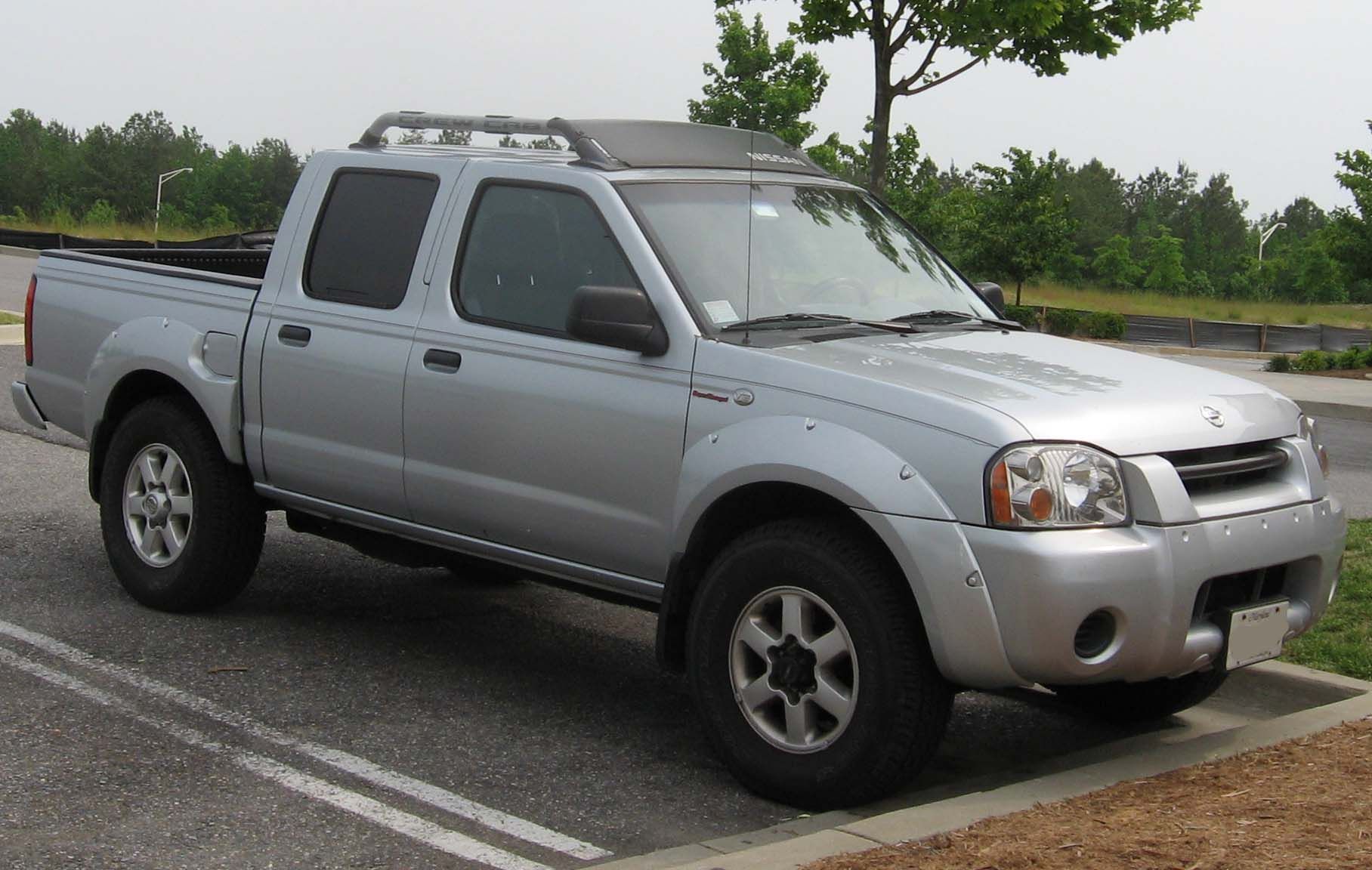
14. **Nissan Frontier**Our journey through regret continues with the Nissan Frontier, a mid-size pickup truck that, for a specific period, became synonymous with driver frustration. While a truck is supposed to be your trusty companion, many owners found themselves “shaking their heads and pounding the dashboard with their fists” over this particular model. It just goes to show that even rugged vehicles can have their Achilles’ heel.
The model years from “2005 to 2010” were especially notorious for a truly baffling and destructive problem: transmission issues caused by the radiator leaking coolant directly into the transmissions. Yikes! This catastrophic design flaw led to a cascade of problems, including “slipping gears, herky-jerky shifting, and outright transmission failure.” You’d expect a truck to handle tough jobs, not self-destruct from within its cooling system.
Beyond the coolant-to-transmission catastrophe, owners of these Frontier models also frequently battled “engine and timing chain issues.” These are not minor fixes; they’re expensive, time-consuming repairs that can quickly make ownership unbearable. When your truck is spending more time in the shop than on the road, it’s a pretty clear sign that buyer’s remorse is not just a feeling, but a deeply earned reality.
Car Model Information: 2014 Nissan Frontier S
Categories: All set index articles, Articles with short description, Nissan vehicles, Set index articles on cars, Short description is different from Wikidata
Summary: The Nissan Frontier is a nameplate used on three different pickup truck models by Nissan:
Nissan Frontier (international), an alternative nameplate for the NP300/Navara on some markets
Nissan Frontier (North America), a rebadged NP300/Navara from 1997 to 2021, then became a separate model since 2021
Nissan Frontier Pro, a rebadged Dongfeng Z9 PHEV that will be available from 2025.
Get more information about: Nissan Frontier
Buying a high-performing used car >>>
Brand: Nissan Model: Frontier
Price: $13,435 Mileage: 131,197 mi.
Read more about: 11 SUVs That Promise Adventure But Deliver Owners Immediate Regret
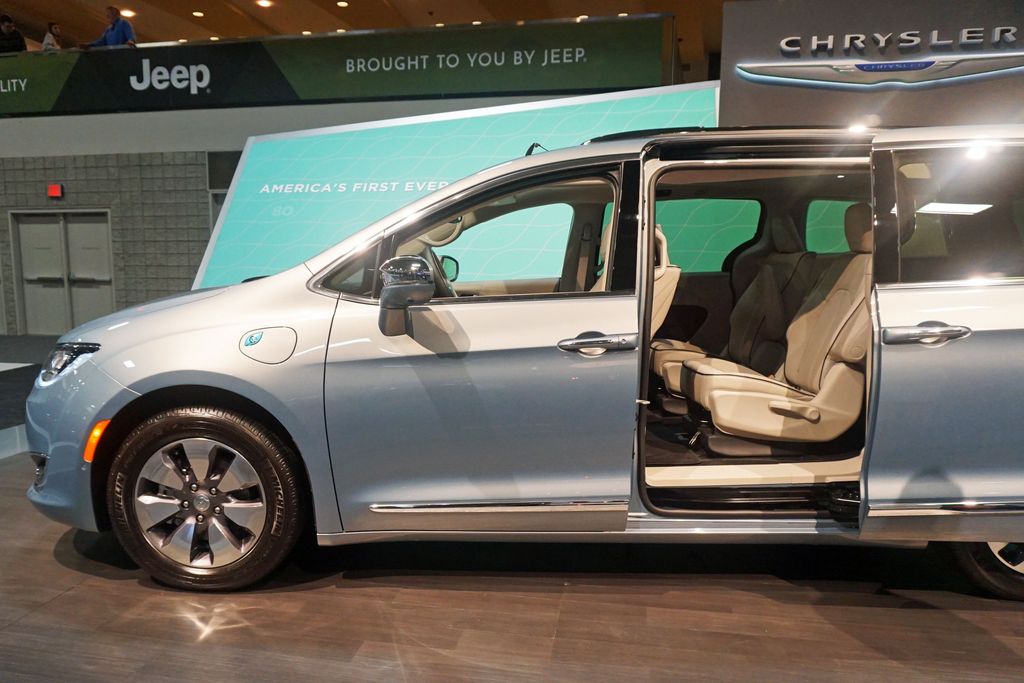
15. **Chrysler Pacifica Hybrid**Last but not least on our list of regrettable rides is the Chrysler Pacifica Hybrid. It’s a popular minivan, offering families the promise of fuel efficiency thanks to its plug-in hybrid powertrain. On paper, it sounds like a dream come true for modern families looking to save on gas while still having plenty of space. But, as many owners can attest, this dream often turned into a rather expensive, electrifying nightmare.
The big question for many owners quickly became: is the touted fuel efficiency truly enough “to offset the battery and electrical problems?” The resounding answer, according to countless drivers, was a definite “No.” Owners reported a slew of issues including frustrating “battery drain,” an “inconsistent all-electric range” that never quite lived up to expectations, and in some cases, outright “battery failure.” Imagine buying a hybrid for its electric capabilities, only for them to consistently fall short.
And just when you thought the hybrid’s unique problems were enough, the Pacifica Hybrid also had issues with its “electric continuous variable transmission.” So, even the part that helps it go could be a source of trouble. It seems the list of things that could go wrong with this popular minivan “goes on,” making it a prime example of how even innovative vehicles can deliver a hefty dose of buyer’s remorse.
### Unpacking the ‘Why’: Understanding Buyer’s Remorse
So, we’ve chewed through 15 vehicles that have left owners utterly regretting their purchase, but why does this feeling of buyer’s remorse hit us so hard, especially after such a significant decision like buying a car? It’s not just a fleeting thought; it’s a genuine psychological reaction that often creeps in when doubts start to cloud our judgment. It turns out, we’re all just a little bit human, and our brains love to second-guess us.
One of the biggest culprits is often “financial worries.” You sign on the dotted line, the excitement fades, and then the reality of those “high monthly payments” or “unexpected maintenance costs” suddenly feels overwhelming. It’s that moment you realize the cost is perhaps “higher than expected,” leading to a wave of financial stress that can genuinely sour the entire experience.
Then there’s the comparison game. Ever bought something, only to see “a better deal after the purchase” or find yourself “comparing other options” you initially overlooked? It makes you feel like you rushed into the decision, especially if there was “pressure from others”—like friends or family—questioning your choice. And let’s not forget the classic “expectations vs. reality” mismatch, where the car just doesn’t quite live up to the glossy ads or your idealized vision.
Other common triggers include “feeling rushed into the decision,” maybe by a savvy salesperson or a limited-time offer, and worrying constantly about “resale value” and potential depreciation. These anxieties about losing money can really eat away at your confidence, turning what should be a joyful purchase into a source of constant low-level dread.
### Hitting the Reset Button: How to Deal with Buyer’s Remorse
Okay, so the cold wave of dread has washed over you. The buyer’s remorse is real. What now? First off, take a deep breath and “acknowledge your feelings.” Trust us, it’s completely “normal” to feel this way. Accepting it is the first step to moving forward with a clearer mind. You’re not alone in this!
Sometimes, all it takes is a little bit of time. “Give it time” to adjust to your new ride. The initial regret can often fade as the novelty settles and you get used to your new vehicle. But if it sticks around, you’ll want to “identify the root cause.” Is it the payments? Performance? Or maybe you just saw a cooler car? Pinpointing the ‘why’ will help you figure out the ‘how’ to fix it.
If things are serious, don’t hesitate to “contact the dealership ASAP” and “review your purchase terms.” Some dealerships, believe it or not, might offer “return or exchange options” within a short window, or you could “consider trade-in options” if you’re truly depressed about your choice. If high payments are the issue, “refinancing could help” alleviate the financial strain.
For those really stuck, “exploring resale options” or even “selling to a private buyer” might be on the table, though be mindful of things like title transfers and market pricing. And always, always, “think rationally.” Emotional reactions can really cloud your judgment, so step back, reassess, and perhaps even “seek expert advice” from a financial advisor to guide a logical decision.
If you decide to keep the car (and often, you’ll realize it’s not so bad after all!), shift your mindset. “Focus on the positives” – remember what you loved about it in the first place! “Personalize your car” with accessories to make it truly yours, and “think long-term.” You might just grow to love it as you get used to it. After all, learning how to deal with buyer’s remorse isn’t just about fixing a mistake, it’s about shifting your entire perspective.
### Dodging the Dread: Preventing Future Car Regrets
Alright, we’ve covered the horror stories and how to cope, but the real MVP move is preventing buyer’s remorse from crashing your party in the first place! And guess what? It’s totally doable. This isn’t just about making a smart purchase; it’s about making a *confident* one.
The absolute golden rule? “Do thorough research.” Don’t just fall in love with the first shiny thing you see. Compare prices, pore over different models, and really dig into financing options *before* you even set foot on a dealership lot. This isn’t just window shopping; it’s a strategic mission to arm yourself with knowledge.
When you do find a potential candidate, don’t just take it for a spin around the block. “Take a long test drive.” Seriously, drive it like you already own it. Make sure it truly meets your needs, feels comfortable, and doesn’t give you any funny feelings before you even think about committing. You need to connect with that car, and a quick lap just won’t cut it.
Next up, “plan your budget carefully” and then, here’s the tricky part, “stick to it.” Set a crystal-clear budget and don’t let a salesperson sweet-talk you into stretching it thin. Financial strain is one of the biggest remorse triggers, so protecting your wallet means protecting your peace of mind.
And finally, avoid the impulse trap! “Avoid impulse decisions” at all costs. There’s no rush to buy a car, no matter what anyone tells you. Take your sweet time, weigh all your options, and make an informed choice that you’ll still feel good about weeks, months, and even years down the line. Learning how to deal with remorse is one thing, but preventing it? That’s the ultimate power move for any savvy car buyer.
### The Road Ahead: Driving Towards Confidence
Car Model Information: 2023 Buick Envision Preferred
Name: Chrysler Pacifica (RU)
Manufacturer: Chrysler (automotive brand)
Aka: Chrysler Voyager,Chrysler Grand Caravan (Canada, 2021–present)
Production: 2016–present
ModelYears: 2017–present
Assembly: Windsor, Ontario
Designer: Irina Zavatski,Winnie Cheung (interior)
Class: Minivan
BodyStyle: 5-door minivan
Layout: Front-engine, front-wheel drive,Front-engine, all-wheel drive
Platform: Compact U.S. Wide platform
Related: Chrysler 200#Second generation (2014–)
Engine: Chrysler Pentastar engine#3.6L,FCA Global Medium Engine
Motor: 2x electric motors (SiEVT main motor & motor generator; PHEV)
Transmission: ZF 9HP transmission,automatic transmission,Continuously variable transmission
Drivetrain: PHEV
ElectricRange: cvt
Battery: val,lithium-ion battery
Wheelbase: 3089 mm
Abbr: on
Order: flip (hybrid)
Length: 203.6 in
Width: 79.6 in
Height: convert
Weight: {{convert,1964,kg,lb,abbr=on,order=flip
Predecessor: Chrysler minivans (RT)
Categories: 2010s cars, All-wheel-drive vehicles, Articles with short description, CS1 Spanish-language sources (es), Cars introduced in 2016
Summary: The Chrysler Pacifica is a minivan produced by the Chrysler division of Stellantis since the 2017 model year. Replacing the Chrysler Town & Country, the Pacifica is the sixth generation of Chrysler minivans, taking its name from the 2004–2008 product line. Along with serving as the first minivan with a plug-in hybrid drivetrain, the Pacifica has also served as a platform for autonomous vehicle development.
For the 2020 model year, Chrysler repackaged the lower-trim versions of the Pacifica as a revived Chrysler Voyager, largely to expand fleet sales of the model line; following the retirement of the Dodge Grand Caravan, the Chrysler Voyager was introduced in Canada for 2021 as the Chrysler Grand Caravan (moving the nameplate from Dodge to Chrysler after 36 years). Following the retirement of the Chrysler 300 sedan, the Pacifica/Voyager/Grand Caravan is currently the only vehicle marketed by Chrysler.
Chrysler has assembled the Pacifica minivan (and the Voyager/Grand Caravan) in its Windsor Assembly facility in Ontario (home to Chrysler minivan assembly since 1983).
Get more information about: Chrysler Pacifica (minivan)
Buying a high-performing used car >>>
Brand: Chrysler Model: Pacifica Hybrid
Price: $20,221 Mileage: 46,554 mi.
Read more about: Beyond Their Era: 14 Classic Cars That Revolutionized Automotive Design and Engineering, Then Faded From Memory
Phew! What a journey through the automotive hall of shame. Buyer’s remorse, whether it’s a gut-wrenching dread or a quiet hum of ‘what if,’ is clearly a common passenger on the car-buying trip. From battery blazes to transmission terrors, these 15 vehicles serve as a vivid reminder that not all shiny metal monsters are created equal. But hey, now you’re armed with the confessions of others, the psychological lowdown on why we regret, and a roadmap for dealing with and preventing future automotive heartbreaks. So, go forth, savvy car shopper, and make choices that spark joy, not dread. Your future self (and your bank account) will thank you!

